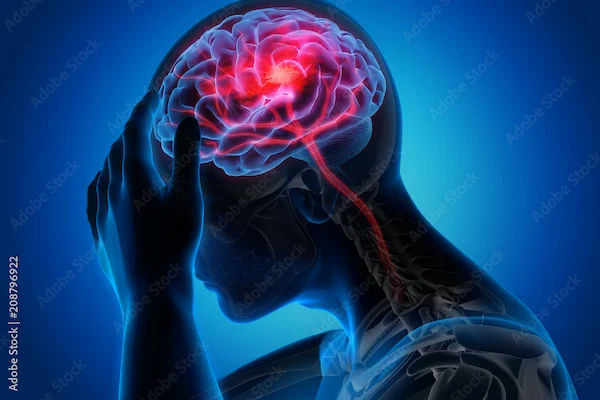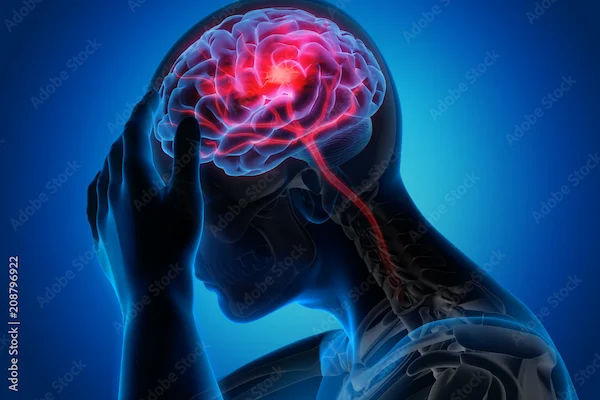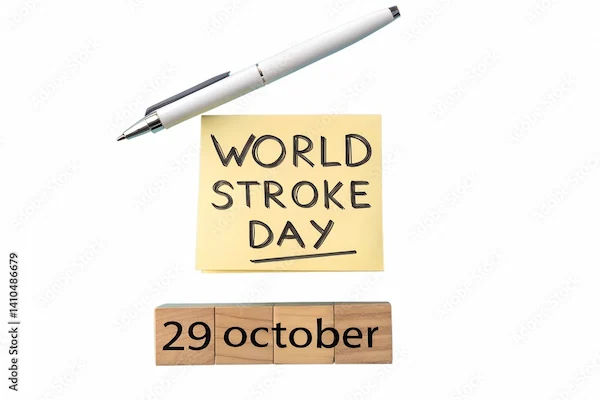Stroke Treatments Innovations: A New Era of Recovery
Discover the latest stroke treatment innovations revolutionising recovery. Explore cutting-edge therapies, advanced medical technologies, and breakthrough research paving the way for faster and more effective stroke rehabilitation.

Written by Dr. Sonia Bhatt
Last updated on 3rd Jul, 2025

Introduction
A stroke can strike without warning, potentially changing a person’s life in an instant. It happens when the blood supply to the brain is disrupted, leading to a range of symptoms, including weakness, difficulty speaking, or loss of vision. There are two primary types: ischemic stroke, caused by a blood clot blocking a brain artery, and haemorrhagic stroke, where bleeding occurs in the brain.
Over the past few years, stroke treatment has evolved dramatically. Thanks to new technologies and research breakthroughs, healthcare professionals now have better tools to help people recover, leading to more promising outcomes for stroke patients.
What Happens During a Stroke?
A stroke occurs when a blockage or rupture of blood vessels prevents blood from reaching the brain, causing the affected brain tissue to begin dying. The brain relies on constant blood flow to function properly, so a stroke can cause lasting damage, depending on where the interruption occurs.
The two main types of stroke are:
Ischemic Stroke: This is the most common type, accounting for around 87% of all strokes. It happens when a blood clot blocks an artery, reducing blood flow to the brain.
Haemorrhagic Stroke: It occurs when a blood vessel in the brain bursts, causing bleeding inside the brain.
Time is the key to minimising brain damage and improving recovery. The sooner medical professionals intervene, the better the chances of reducing the impact of the stroke. This has led to groundbreaking innovations in stroke treatment, changing how patients are cared for and improving their overall outcomes.
Leading Innovations in Stroke Care
The world of stroke treatment is constantly evolving. Innovative therapies are developed aiming to improve treatment options and maximise post-stroke recovery potential, leveraging the brain's neuroplasticity. Following are some of the leading innovations in stroke treatment.
1. Thrombectomy: Revolutionising Stroke Treatment
One of the most important breakthroughs in recent years is the development of thrombectomy, a minimally invasive procedure for removing large blood clots from brain arteries. This treatment is particularly effective for patients with ischemic stroke, as it can quickly restore blood flow to the brain and significantly improve recovery prospects.
Thrombectomy works best within 6 to 24 hours of stroke onset. Patients who undergo this procedure often experience better functional recovery compared to those who don’t receive it, especially if the procedure is carried out early enough. While not all patients are suitable for this treatment, its impact has been transformative in acute stroke care.
2. Clot-Busting Medications: The Role of tPA
Another crucial advancement in stroke treatment is the use of tissue plasminogen activator (tPA), a medication designed to break down the clot causing an ischemic stroke. This intravenous drug dissolves the blood clot and restores blood flow to the affected brain area. The key to its effectiveness is timing—tPA is most beneficial when given within 4.5 hours of the first stroke symptoms.
However, tPA comes with some risks, such as bleeding complications, particularly in those with haemorrhagic strokes. When used appropriately, though, it can help reduce long-term disability and improve outcomes for patients who have an ischemic stroke.
3. Advanced Imaging Techniques: Better Diagnosis for Better Treatment
Early and accurate diagnosis is crucial for effective stroke treatment and advancements in imaging technology are helping doctors make faster, more informed decisions. Techniques like CT perfusion imaging and MRI scans now provide detailed images of the brain, allowing doctors to assess the extent of damage and determine which treatments are most appropriate.
For example, CT perfusion imaging can pinpoint areas of the brain where blood flow is decreased, enabling doctors to recognise the brain tissue which might still be saved. These advanced imaging tools help in more precise treatment decisions, enhancing stroke patients' chances of a successful outcome.
4. Neuroprotective Therapies: Protecting the Brain
After a stroke, the brain is highly vulnerable to further damage due to inflammation and other harmful processes. Neuroprotective therapies target to protect the brain from these effects, helping to preserve its function and promote recovery.
These therapies are still under investigation, but early studies have shown promising results. Some drugs aim on reducing oxidative stress (a process that damages brain cells), while others aim to improve the brain's natural healing ability or improve blood circulation. Though these treatments are not yet standard practice, they hold significant potential to improve long-term outcomes for stroke patients.
5. Rehabilitation: Harnessing Neuroplasticity for Recovery
Rehabilitation plays an important role in after-stroke recovery. Patients often need therapies after the initial treatment phase to help them regain lost abilities. One of the most exciting areas of rehabilitation is neuroplasticity – the brain’s ability to reorganise itself by forming new neural connections.
Patients can retrain their brains to regain functions affected due to the stroke by participating in physical, speech, and cognitive therapy. New technologies like robotic rehabilitation devices and virtual reality (VR) programmes are also enhancing rehabilitation efforts. These innovations allow patients to practice tasks in immersive atmospheres, stimulating brain activity and facilitating faster recovery.
6. Stem Cell Therapy: The Potential for Regeneration
Stem cell therapy keeps great promise for stroke recovery. Stem cells are having the unique ability to regenerate damaged brain tissue, potentially helping recovery after a stroke. Although research in this area is still in its early stages, there is growing evidence that stem cells could help repair neural tissue, reduce inflammation, and even restore lost functions.
While stem cell therapy is not yet an established treatment, ongoing studies suggest that it may be a major part of stroke care in the future. Researchers are working hard to understand how stem cells can be used safely and effectively to treat stroke patients.
How Patients Can Benefit from New Treatments
For those who had a stroke or are at risk, staying informed about new treatment options is key. Here are a few tips for making the most of these advancements:
Know the signs of stroke: It is critical to recognise a stroke early. Use the FAST acronym to spot symptoms: face drooping, Arm weakness, Speech difficulty, and the Need to call for help.
Seek immediate medical care: If you suspect someone is having a stroke, don’t wait. Getting treatment quickly can significantly reduce the damage and increase the chances of recovery.
Follow a stroke prevention plan: If you’re at risk for stroke, work with your healthcare team to manage risk factors like high blood pressure, diabetes, and high cholesterol.
Engage in rehabilitation: After the acute phase of stroke treatment, participating in rehabilitation is essential. The earlier you begin therapy, the better your chances of recovery.
Stay positive and proactive. Research into new stroke treatments is ongoing, so stay hopeful. New therapies are being developed constantly, and your doctor can guide you through the latest options that may be available.
Conclusion
Stroke treatment has developed dramatically in recent times, with advances in thrombectomy, clot-busting medications, neuroprotective therapies, and rehabilitation offering new hope to patients. While some of these therapies are still being refined or studied, the improvement made so far indicates that recovery from brain stroke is more possible than ever before. The key to successful therapy for stroke patients is timely intervention, staying informed, and engaging in the rehabilitation process. With continued research and innovation, stroke care will continue to improve, offering patients a brighter future.




